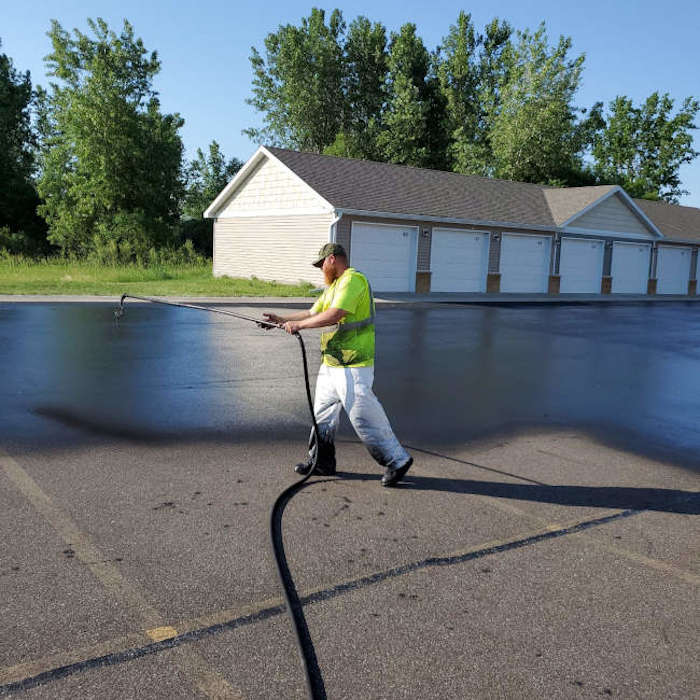Boost Sidewalk Efficiency: Cold Mix Asphalt Sealing Methods
Wiki Article
Cold Mix Asphalt Vs. Hot Mix Asphalt: Which Is Right for You?

Make-up Distinctions
Cold mix asphalt is created by emulsifying the asphalt binder with water and an emulsifying representative before blending it with accumulation. The hot mix asphalt production process involves warming the accumulation and asphalt binder individually prior to combining them at the asphalt plant.
Moreover, cool mix asphalt often tends to be much less thick and more flexible than warm mix asphalt. This flexibility makes it far better suited for locations with higher degrees of activity, such as driveways or roadways with rush hour. In contrast, hot mix asphalt is understood for its high durability and resistance to rutting and splitting, making it a preferred selection for freeways and high-traffic roads where longevity is crucial.
Installment Process Differences
The procedure of setting up chilly mix and hot mix asphalt exhibits notable variations in their treatments and needs. In comparison, hot mix asphalt demands a more intricate installment process. Due to the home heating requirements, hot mix asphalt installments are commonly carried out by professionals with specialized equipment, making certain a much more structurally sound and permanent outcome.Sturdiness and Long Life Factors
When thinking about asphalt options, longevity and longevity are essential variables to review for lasting pavement efficiency. Hot mix asphalt (HMA) is known for its outstanding durability and longevity.
In regards to longevity, HMA typically outperforms CMA as a result of its premium stamina and resistance buildings. HMA pavements have a longer solution life, requiring less regular repair work and upkeep, which can equate to set you back savings in the future. Furthermore, HMA pavements are extra conveniently customizable to meet specific job requirements, better boosting their toughness.
Expense Considerations
Thinking about the economic ramifications is an important element when evaluating the selection in between hot mix asphalt (HMA) and chilly mix asphalt (CMA) for sidewalk jobs. While the initial cost of warm mix asphalt is generally greater than that of cold mix asphalt, HMA often supplies a more cost-effective solution in the long run as a result of its exceptional resilience and long life. HMA is understood for its capability to endure rush hour lots and harsh weather condition problems, minimizing the demand for frequent repairs and maintenance. On the various other hand, cool mix asphalt is much more affordable upfront but might call for more regular patching and resurfacing, resulting in higher maintenance prices gradually.Along with product prices, it's necessary to think about the costs related to installation and maintenance when comparing HMA and CMA. HMA see here now normally needs customized devices and competent labor for correct installation, which can impact total task expenses. Conversely, CMA is much easier to work with and can often be applied utilizing less complex strategies, possibly decreasing installment costs. Eventually, the choice between HMA and CMA need to consider not just the initial cost but also the lasting monetary effects to identify one of the most cost-efficient choice for the specific pavement task.
Environmental Effect Comparison
Contrast of the ecological effects between hot mix asphalt (HMA) and chilly mix asphalt (CMA) discloses distinctive distinctions in sustainability techniques. HMA production requires high temperatures, leading to enhanced energy intake and greenhouse gas emissions.Additionally, the usage of CMA usually entails reusing existing asphalt sidewalk, advertising source preservation and minimizing the amount of waste sent to garbage dumps. This recycling aspect further improves the sustainability of CMA contrasted to HMA. Generally, when thinking about the environmental impact, CMA arises as a more environmentally sustainable option because of its lower energy needs, lowered exhausts, and the possibility for recycling existing products. By choosing CMA over HMA, road construction tasks can add positively to ecological preservation initiatives.
Final Thought
To conclude, the option between cool mix asphalt (CMA) and hot mix asphalt (HMA) depends upon different variables such as structure, installation process, toughness, durability, cost, and ecological effect. angle parking. While CMA supplies you can try here a economical and fast solution for minor repair services, HMA makes sure premium resilience and longevity for rush hour locations. Think about these variables carefully to determine which sort of asphalt is the right option for your paving requires

Thinking about the basics financial implications is an important aspect when assessing the selection in between warm mix asphalt (HMA) and cold mix asphalt (CMA) for pavement tasks. While the initial expense of hot mix asphalt is typically greater than that of chilly mix asphalt, HMA frequently offers an extra cost-effective option in the long run due to its exceptional durability and durability. angle parking.Comparison of the ecological impacts between warm mix asphalt (HMA) and chilly mix asphalt (CMA) exposes unique differences in sustainability techniques.In conclusion, the option between cold mix asphalt (CMA) and hot mix asphalt (HMA) depends on various aspects such as structure, setup procedure, sturdiness, longevity, cost, and environmental effect
Report this wiki page